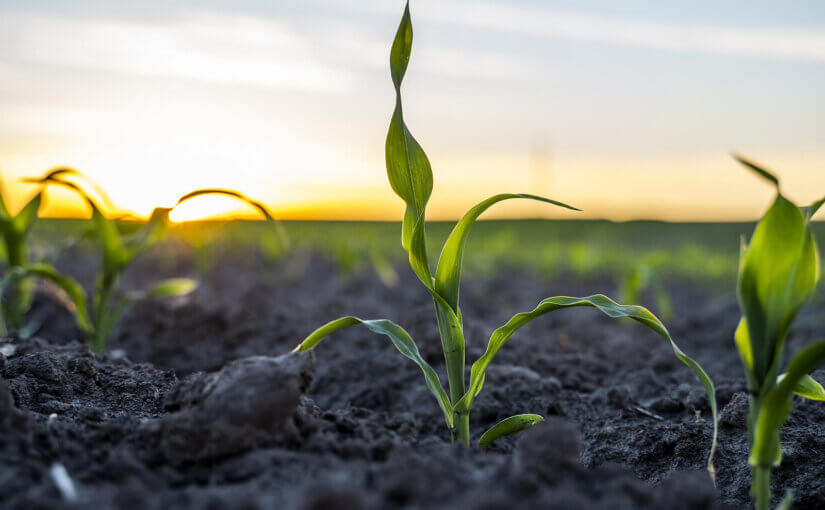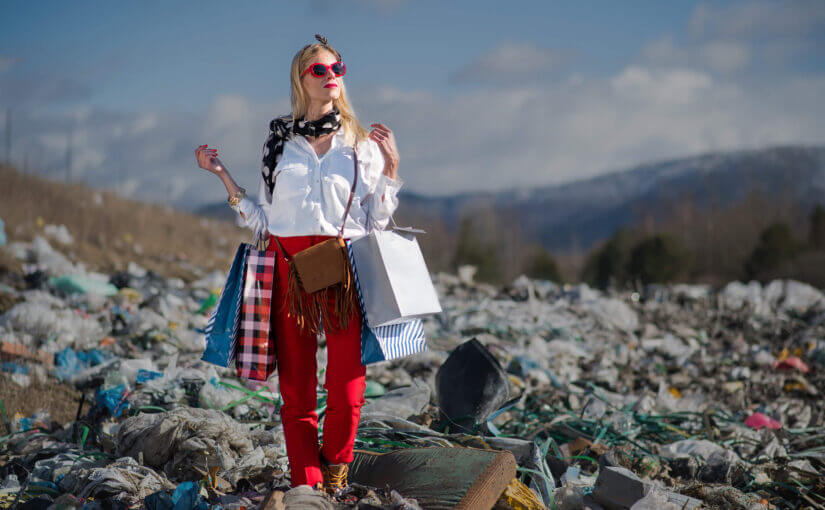Easter is one of the most fun-filled times of year — in fact many people say it’s their favourite holiday, as it’s a chance to meet up with family and friends, without some of the stress that comes in the run-up to Christmas.
Category: Environment
Everything you need to know about hemp clothing
Caring for the environment doesn’t only concern your diet or method of transport.
Did you know that around 300,000 tons of clothing are burned or buried in landfill each year? Fast fashion is one of the biggest contributors to the climate crisis. The cheap clothes are designed to be disposed of, meaning after just a few uses they could end up in the ground. This is why sustainable fashion is so important.
Continue reading Everything you need to know about hemp clothing
What is a Climatarian diet?
The climate crisis has led many to reconsider their diet, wanting to know more about the food they eat and how it impacts the earth.
From analysing the environmental impact of red meat to rejecting avocados in favour of locally grown fruits, it appears that a new optimum way of eating is encouraged every week.
Eco friendly Valentine’s Day gift ideas
Known for its gimmicks and reliance on mass marketing, Valentine’s Day is largely regarded as one of the most wasteful holidays of the year.
But if you want to celebrate the day of love and indulge in some romance with your special someone, there are ways to ensure your presents are eco-friendly and kind to the planet.
All you need to know about Big Energy Saving Week
Though paying our energy bills may be a relatively mundane part of our day-to-day lives, Big Energy Saving Week offers a chance to look at how we can save energy and cut our monthly costs.
What is Big Energy Saving Week?
Big Energy Saving Week takes place annually towards the end of January, this year happening between the 17th and 23rd of the month.
The week aims to highlight helpful ways people can save on their energy bills. Advice is also offered to those struggling to pay for their energy, including who to contact for help.
Focus is largely on the eco-friendly changes people can make to cut their energy consumption while reducing monthly costs.
It’s an important opportunity to take stock and consider your energy usage, evaluating where savings could be made on energy bills.
Energy saving advice
With the energy costs rising for many households, simple energy-saving advice has never been more valuable.
By applying both quick fixes and larger lifestyle changes, your energy bills could be drastically reduced. Not only will you save money, but you’ll be lowering your carbon footprint too.
Homeowners, private renters, students, and even those who live at home with their parents can all be more conscious of their energy usage, adopting many things to lessen their amount.
Turn off standby
It’s easy to leave things like our TVs, computers, and kitchen appliances in standby mode. But switching items off at the plug can lower the amount of energy they consume when not in use.
Standby savers or smart plugs can help – they allow you to turn all your appliances off completely in one go.
Turn off lights
This one may seem obvious, but it’s often surprising how many people leave lights on in empty rooms. Start a habit of switching off lights and all lamps every time you leave a room.
Switch to LED
Similarly, switching those same light fixtures to LED energy-saving lightbulbs will also reduce your annual energy bills.
Wash at 30
Unless your clothes are particularly dirty, most washing done on a 30-degree cycle achieves the same results. To be even more energy-efficient, only put your machine on when you have a full load and avoid using the tumble dryer if possible.
Insulate your home
If you live in an older home, you may find that the small gaps around windows, doors, and near the flooring could be costing you energy. Professional draught-proofing may be costly, but it does save on your bills in the long room.
Alternatively, there are many ways to insulate your home yourself. Consider these DIY draught-proofing tips to increase your home’s energy efficiency.
Limit bath/shower time

Though many of us enjoy a long soak in the bathtub after a tiring day at work, switching just one bath a week to a quick shower will help reduce your energy costs.
Likewise, cutting the length of your showers will go a long way too. Longer, hot showers can actually damage the skin anyway – doctors recommend 5 to 10 minutes.
Install a smart meter
Make remembering to submit your monthly gas and electric readings a thing of the past – smart meters automatically tell your supplier how much energy you have used. They also help you to keep track of your usage, so you can stay below a certain amount and work towards an ideal energy goal.
Many companies are now encouraging their customers to have a free smart meter installed. Contact your energy supplier to ask what their policy is.
Switch your energy supplier
If you are applying these changes yet still finding that your energy bills are sky-high, it might be time to consider switching to a different energy supplier.
Money-saving websites offer detailed comparisons of the most costefficient energy providers for your area – taking the time to shop around and do your research is key.
It’s also a good opportunity to consider switching to a green energy supplier that uses more sustainable methods. Reducing your carbon footprint may turn out to be more cost-efficient than you think.
Financial help for energy bills

If you are struggling to pay your energy bills, there are places you can contact for help and advice.
Citizens Advice has a guide on the grants and benefits available for people who can’t afford their monthly energy bills.
The Warm House Discount Scheme offers those on a low income up to £140 of their electricity bill, while the Winter Fuel Payment is a one-off payment available for those born before 26 September 1955.
When it’s very cold, those on certain benefit or support schemes can take advantage of one-off Cold Weather Payments to help pay for extra heating used.
If you do find yourself in any kind of debt because of your energy bills, you may find that your energy supplier actually offers a grant to help pay it off. Local councils may also offer grants or schemes to those in particularly hard situations.
How to do Veganuary
As many of us use January as a way to kick-off our New Year’s resolutions and make healthy alterations to our lifestyles, the month-long challenge of Veganuary has only grown in popularity over the years.
With over half a million people estimated to have taken part during the 2021 campaign, learning more about Veganuary and how to properly get involved has never been more important.
What is Veganuary?
Veganuary is a 31-day challenge during January that encourages participants to give up meat and animal products from their diet.
The month aims to promote the many benefits of veganism, with a particular focus on the ethical and environmental impacts of meat and dairy.
Those who take part are often encouraged to cook vegan food from scratch, learning more about the different types of fruits, vegetables, and pulses that are key in a vegan diet.
Others also use the month as an opportunity to discover more about the concept of veganism and other vegan-friendly lifestyle changes you can make.
Is a vegan diet better for the environment?

The environmental impact of eating meat is now common-knowledge – the red meat industry, in particular, is considered one of the biggest contributors to greenhouse gases, due in part to the methane that livestock release.
Some studies have suggested that the carbon footprint of vegans is around 100% less than those who regularly eat meat, and a plant-based diet has even been recommended by UN experts as a means to fight climate change.
Huge amounts of land are used in meat farming, while even more space is required to grow the food to feed these animals. This contributes to the growing decline of the world’s forests, releasing more carbon dioxide into the atmosphere and destroying vital ecosystems.
Foods typically found in a vegan diet use less space, energy and, overall, come with a smaller carbon footprint. It is for these reasons that a vegan diet is considered better for the environment.
How to do Veganuary
Taking part in the vegan challenge this year? Great!
While changing your eating habits may seem daunting, there are a few handy tips and tricks to ensure you have a successful month and do Veganuary right.
Beating meat and dairy cravings
If this is your first time eliminating animal products from your diet, it’s likely that at some point over the month, you’ll be tempted by meat or dairy.
Thankfully, there are loads of alternatives to help curb those cravings. The range of meat and dairy substitutes is only growing, with big-name brands now providing vegan-friendly versions of their products.
When those cravings hit, head down to your nearest supermarket and try the likes of vegan bacon, cheese, or even creamy vegan chocolate.
It’s also important not to be derailed if you slip up over Veganuary. The reasons you have for taking part in the month are still valid, and you may even find that the more vegan foods you try, the less you will want the non-vegan versions.
Enjoying a healthy vegan diet
Just like non-vegan food, there are plenty of unhealthy vegan alternatives, mostly in the form of ready meals and sweet treats.
While these are OK to indulge in every once in a while, make sure your Veganuary is full of healthy vegan food choices as well. This includes getting a proper amount of fruit and vegetables, and ensuring you are eating a good amount of protein from sources like pulses and nuts.
If your diet is usually very meat and dairy heavy, you may also find that vitamins and supplements are needed. Vitamin B12 is a common addition to most vegan diets, as it is usually only found in animal products. Calcium, a nutrient found in dairy, is another suggested supplement.
Accidentally vegan treats
You may be surprised to learn that many of your household favourite foods are ‘accidentally’ vegan. This makes transitioning to full veganism for the month much easier, and the supermarket shop slightly less overwhelming.
Products include:
- Oreo biscuits
- Marmite
- Starburst sweets
- Guinness
- Some flavours of Doritos crisps
- Cadbury Bourneville dark chocolate
- Popcorn
- Hash browns
- Tesco Bourbon biscuits
- And many more
Quick and cheap vegan meals

Many use Veganuary as a means of getting creative in the kitchen and experimenting with different Veganuary recipes – and that doesn’t have to mean breaking the bank or spending hours by the hob.
Most vegan recipes are actually quicker to prepare than their meat counterparts, and things like pulses and vegetables are considerably cheaper too.
Tasty bean chillis are a staple for many vegan diets and can be easily adapted to include all your favourite vegetables and spices.
For a quick midweek meal, why not try making a meatless fajita, using seasoned tofu instead of chicken or beef.
Your home comforts can also be easily made vegan – this shepherd’s pie recipe is packed full of vegetables and fresh herbs and uses canned chickpeas as its source of protein instead.
Other ways to take part in Veganuary
Being vegan isn’t only about your diet. Veganuary is a great way to discover all the other ways you can live a vegan lifestyle.
Many people go vegan for environmental reasons, so reducing their carbon footprint in other ways is also important. Whether by eating only seasonal produce, cutting down on air travel, or switching to an electric car, caring for the planet, and being vegan often go hand in hand.
Animal welfare is another major reason people give for following a vegan diet. Use Veganuary as a way to read up on the reality of the meat and dairy industries, so you can make your own dietary decisions.
Shopping ethically is also an important part of the vegan ethos. You may be surprised to find that your beauty, clothing, or cleaning products are not vegan-friendly. Some may be tested on animals, while others may contain animal products. Do some research on some vegan-friendly brands and ensure your Veganuary has a lasting impact.
Could your returned items end up in landfill?
With our need for online shopping only increasing, many of us have begun to question the environmental impact of returning our unwanted items.
Whether items purchased in haste, arriving in the wrong size, or are simply victims of a changed mind, it’s estimated that at least 30% of all products ordered online are returned – far more than the 8.89% taken back to physical retailers.
If the product isn’t faulty, we can be forgiven for thinking that our unwanted items are popped back in the warehouse ready for a new (hopefully more loving) buyer. Yet in fact, many returned, perfectly saleable goods, are tossed into landfill sites around the globe.
Is online shopping eco-friendly?
The argument for whether or not online shopping is eco-friendly is a tricky one.
On the one hand, shopping online opens us up to a world of independent businesses that usually have clear sustainability goals. Plastic-free products and vegan-friendly items are found in abundance online, while the absence of the physical shop allows retailers to invest more in sustainable practices and consider their environmental impact.
On the other side of the fence, these goods sometimes carry a large footprint due to the shipping and manufacturing process. Online shopping as a whole has generally meant that people buy more things, often more than they need, and many items are wasted or returned.
What happens to returned items?
If a product isn’t faulty and you’re returning it unused, it makes sense for it to simply be repackaged and resold by the retailer once more… right?
Sadly, it isn’t as straightforward as that. Most companies don’t have the logistics in place to handle an unwanted return, as these are handled differently to faulty or imperfect items.
For many, it is more cost-efficient to sell the product cheaply to discounters via a web of worldwide shipping or throw it straight into landfill. Both options increase the carbon footprint of the product.
Clothes
In the UK, we buy more clothes per person than any other country across Europe. Clothes are some of the most common items bought online, with many of us ordering outfit options and multiple sizes with an intention to return the unwanted.
While this may seem like a good workaround to the absence of changing rooms, our obsession with online clothes shopping is filling up our landfill sites.
In an attempt to address the issue, fashion retailer ASOS detailed exactly what happens to their returns and the steps they take to ensure their products don’t end up in landfill.
A positive step forward for the online giant, yet it will take many other retailers following suit to effectively tackle this growing waste problem.
What does Amazon do with returned items?

One of the largest online retailers, Amazon, came under fire in the UK in 2021 after it was discovered that it was destroying millions of items of unsold stock every year.
These were items that were unwanted and unused, or had been returned by customers, yet had no plans of being resold.
Individual retailers pay an amount to Amazon to keep their stock in the warehouses, so when a product continues to go unsold, it is often cheaper to dispose of it – sometimes straight after it has left the production line.
Although Amazon denied that any of the destroyed items went to landfill in the UK, and insisted that they were correctly disposed of, this is still environmental wastage on a catastrophic scale.
What can I do with unwanted new items?
While it may be down to retailers to reconfigure their logistics and evaluate their environmental impact when it comes to returned items, there are a few steps that consumers can take when shopping online.
If you’ve found yourself with an unwanted new item, try out the below before you fill out that return form.
Regifting
The product may not be right for you, but perhaps it’s perfect for a friend or loved one with a birthday coming up. This also means you won’t be scrambling around for a last-minute present either.
Sell online
Receive your refund in a more eco-friendly way and sell your unwanted item online. Local selling groups like Gumtree, Nextdoor, and Facebook Marketplace are home to hundreds of miscellaneous items. Products that are proven to be new and in the box/with tags are always hot items too, often making close to the RRP.
Donate to charity
If the product was relatively cheap or you’re not too concerned with recuperating your pennies, donating your unwanted item to charity is a wonderful thing to do. New products sell for higher in charity shops, meaning more money for a great cause and a bargain for the savvy shopper too.
You could also see if a charity group or organisation needs your item. Your unwanted clothes or electrical items will be particularly valuable here, as well as craft products and toys for groups focused on younger children.
Buy returned goods for sale
A number of retailers now offer the option of purchasing returned goods, often at a discounted price compared to those fresh off the production line.
Places like Amazon and Wayfair both offer this service, testing their products to ensure quality before resale and indicating whether or not the box has been opened beforehand.
Not only does this save you money, but it also ensures the item is saved from potential landfill and reduces its carbon footprint.
How to shop sustainably online

It’s unrealistic to ask consumers to refrain from online shopping entirely, but there are ways to guarantee a more sustainable shop.
- Only order what you need, and don’t indulge in multiple orders. If you’re unsure of a specific size or style, it’s best to go to a physical shop beforehand.
- Choose retailers that offset their carbon emissions, use plastic-free packaging, and clearly outline their commitments to the environment.
- Shop from independent retailers where possible.
- If you do need to make a return, walk or get public transport to the physical store to do this – it reduces the carbon emissions used in fuel.
Top tips for an eco New Year’s resolution
The new year is a good time to consider adopting some healthier habits, especially when it comes to reducing your carbon footprint.
Is meat sustainable?
Have you ever wondered what impact your meat-eating diet has on the environment?
As the climate crisis continues and we look for more ways to reduce our carbon footprint, rethinking our food choices to be more environmentally friendly is a good place to start.
What you need to know about World Toilet Day
There’s no shortage of international days to celebrate throughout the year, and World Toilet Day gives special notice to one of the most underappreciated facilities – the humble toilet.
Read on to find out everything you need to know about World Toilet Day, including how you can give thanks to your commode on this special day…yes, really!
Continue reading What you need to know about World Toilet Day









